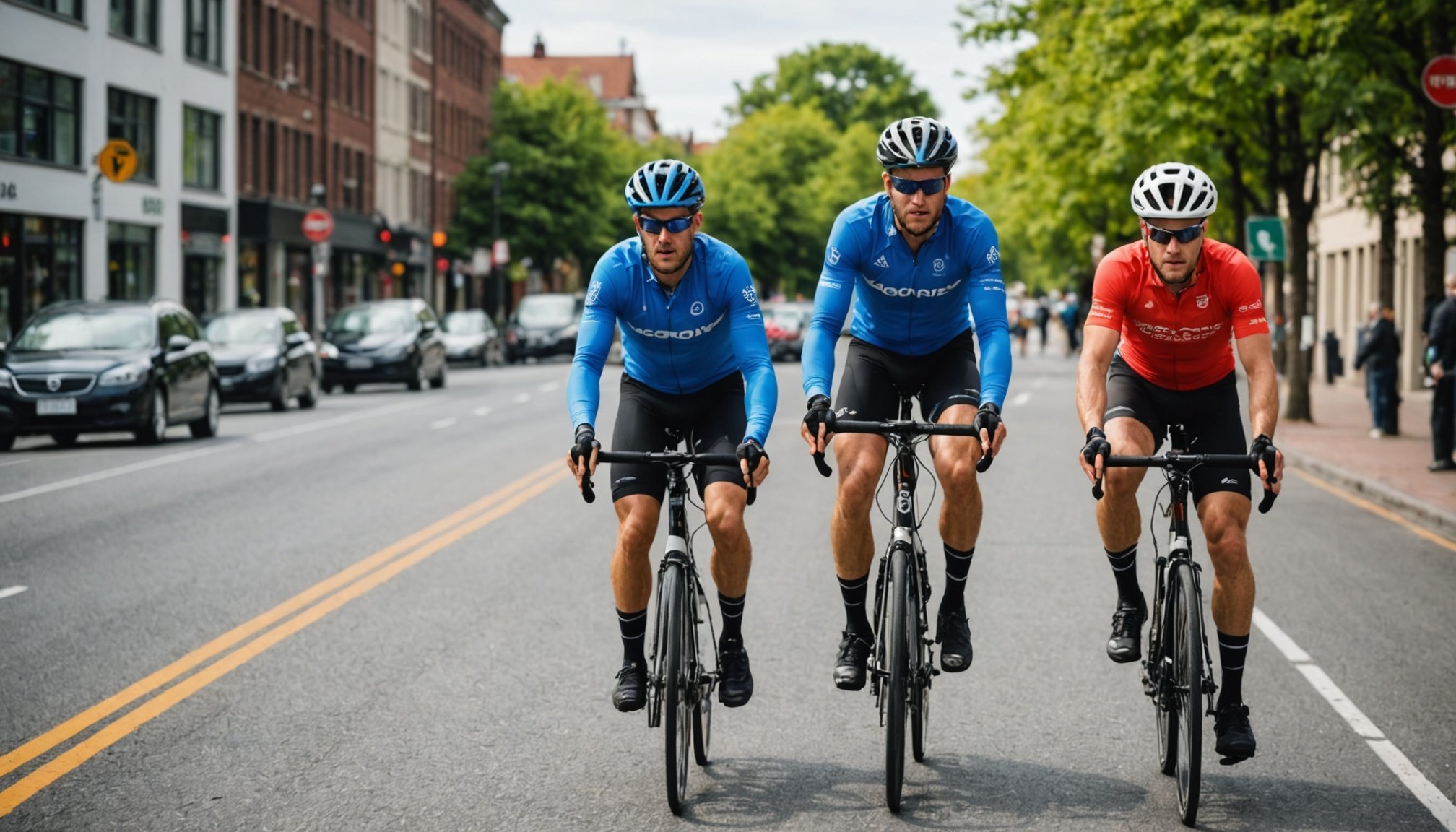As urban landscapes evolve and cities become more environmentally conscious, the bicycle has emerged as a popular mode of transportation. With more cyclists on the roads, it’s crucial for all drivers to understand how to safely share the space. This article serves as a comprehensive guide, offering insights into the best practices for ensuring both cyclists and drivers can coexist harmoniously and safely on the road. By fostering mutual respect and understanding, we can transform our roads into safer environments for everyone.
Understanding the Dynamics of Shared Roadways
Navigating roads that accommodate both vehicles and bicycles requires an understanding of the dynamics at play. As cyclists increasingly take to the street, the interaction between drivers and cyclists must be handled with care to maintain safety and efficiency.
This might interest you : Essential Safety Features to Look for When Selecting a Vehicle for Senior Drivers
Cyclists, unlike motor vehicles, do not have the same protective structure. This makes them more vulnerable in the event of an accident. Thus, it is imperative that drivers exhibit patience and awareness. Cyclists, on their part, must adhere to traffic laws, signalling their intentions to turn or change lanes. The responsibility for safety is mutual, requiring vigilance and communication from both parties.
Moreover, the perception of speed and distance can vary significantly between drivers and cyclists. Vehicles must be cautious not to overestimate the speed of a bicycle or underestimate their required stopping distance. By exercising caution and maintaining a safe distance, drivers can prevent potential conflicts, ensuring that both cars and bikes can share the road peacefully.
Additional reading : What safety precautions should I take when driving in heavy rain?
Best Practices for Drivers
To maintain a harmonious relationship between cyclists and drivers, the latter must adopt certain best practices when sharing the road. Here are key guidelines that can help ensure the safety of everyone on the road.
1. Maintain a Safe Distance: Always allow a minimum of three feet when passing a cyclist. This distance can help avoid accidents caused by sudden movements or changing conditions.
2. Be Aware of Bike Lanes: Bike lanes are designated spaces for cyclists. Avoid driving in or blocking these lanes to ensure cyclists have a clear path. Always check for cyclists before crossing a bike lane, especially when making a turn.
3. Use Turn Signals: Signaling your intentions well in advance helps cyclists anticipate your actions, reducing the likelihood of sudden encounters or accidents. Clear communication is the cornerstone of safety on the road.
4. Check Blind Spots: Cyclists can easily disappear into a vehicle’s blind spots. Make it a habit to double-check these areas before changing lanes or merging.
5. Respect Their Speed: Cyclists may be traveling faster than you expect, especially going downhill. Allow them the space to maneuver safely and avoid cutting them off or causing abrupt stops.
Cyclists’ Role in Shared Road Spaces
Just as drivers have responsibilities on the road, cyclists must also adhere to specific practices to ensure safety and mutual respect. Here are some guidelines for cyclists when sharing the road with motorized vehicles.
1. Follow Traffic Laws: Cyclists are subject to the same traffic laws as vehicles. Obeying signs, signals, and road markings is essential in maintaining harmony and predictability on the road.
2. Be Visible: Wear bright clothing and use lights or reflectors, especially during low-light conditions. Being easily seen by drivers reduces the risk of accidents.
3. Communicate Intentions: Using hand signals to indicate stops and turns allows drivers to anticipate your movements. Clear communication can prevent misunderstandings and potential collisions.
4. Ride Predictably: Avoid making sudden lane changes or swerving. Staying in a straight line helps drivers gauge your actions more accurately.
5. Respect Vehicle Space: Just as you expect drivers to maintain a safe distance, avoid tailgating or weaving between cars. Show the same respect for space and movement that you seek from others.
Creating a Culture of Safety and Respect
A safety-driven culture is built on mutual respect and understanding between cyclists and drivers. Both parties can contribute to a safer environment by adopting a mindset that prioritizes cooperation over competition.
1. Education and Awareness: Community programs that educate both cyclists and drivers about road-sharing can foster mutual respect. Awareness campaigns can highlight the realities and challenges each group faces, promoting empathy and patient behavior.
2. Infrastructure Improvement: Investing in dedicated bike lanes and clearer signage can make roads more navigable for cyclists, reducing the likelihood of accidents. Collaboration with local governments can prompt necessary changes in road infrastructure.
3. Technology and Innovation: Advancements in vehicle technology, such as blind spot detection and cyclist sensors, can enhance safety measures. Encouraging the adoption of such technologies can be a step towards safer roads.
4. Community Engagement: Encouraging community discussions and forums allows cyclists and drivers to share experiences and concerns. Open dialogue can lead to a better understanding and more amicable interactions.
5. Policy and Legislation: Support laws that protect cyclists, such as the requirement for safe passing distances. Advocacy for these policies ensures that rules are in place to protect all road users.
Navigating the complexities of sharing the road with cyclists requires commitment and cooperation from both drivers and cyclists. By understanding the unique dynamics of shared roadways and embracing best practices, we can create a safer and more respectful environment for all road users. As we look toward the future, a collective effort in education, infrastructure development, and legislative advocacy will play pivotal roles in shaping roadways that are inclusive and safe for cyclists and vehicles alike. Remember, the road is a shared space—a place where awareness and respect must prevail to ensure everyone’s safety.











